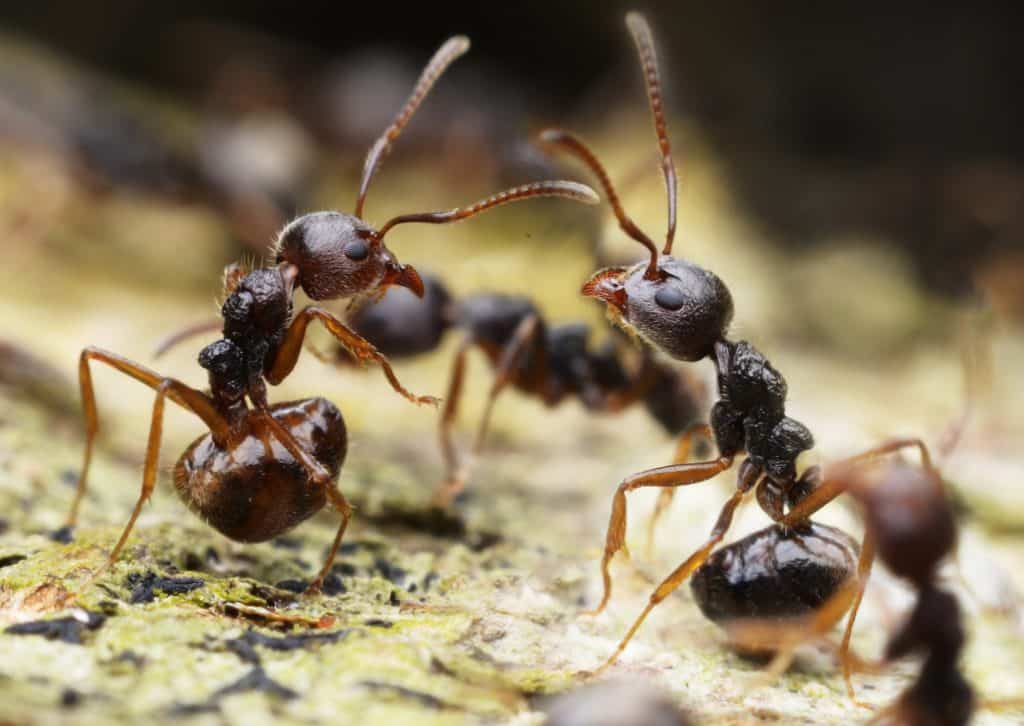ANT CONTROL SERVICES

Ants are social insects that can form large colonies, and many ant species are considered pests due to their ability to invade homes and buildings, contaminate food, and cause structural damage. If you are having issues with an ant infestation or simply a routine ant control issue, then you have come to the right place for a pest control service solution. Whether the ants are in your home or mounding in your yards we can handle this and any pest control issue you have.
Some of the most common household ant control calls that we receive are for Acrobat Ant, Allegheny Mound Ant, Argentine Ant, Bigheaded Ant, Carpenter Ant, Citronella Ant, Field Ant, Fire Ant, Ghost Ant, Harvester Ant, Moisture Ant, Odorous Ant, Pavement Ant, Pharaoh Ant, Thief Ant.
Our approach with Ant Control is identical to every pest that we handle
We perform a thorough inspection.
Determine / Confirm the target pest.
Devise a strategy.
With our entire Pest Control Division, We adhere to an “Integrated Pest Management (IPM)” principle & philosophy which simply means we use a common-sense approach. We take advantage of existing mechanical & environmental controls (habitat modifications, removing attractants, using barriers, traps, etc.) combined with the responsible application of pesticides to eliminate the target pest. Our goal is to remove the nuisance pest while taking into consideration human health, non-target beneficial species, and the environment.
Ant control can be difficult, but there are some things you should know about how ants’ behavior that can lead to big headaches for you.
- Ants leave scent trails: Ants communicate with each other using chemicals called pheromones, which they leave behind as they move around. This allows ants to follow each other to food sources and back to their nest. Pest control professionals can use this behavior to their advantage by using pheromone-based baits to lure ants away from their usual foraging paths and into traps.
- Ants have different food preferences: Different ant species have different food preferences. Some ants are attracted to sweet substances, while others prefer protein or fats. Knowing what type of ant you are dealing with can help you choose the right bait to use.
- Ants can build satellite nests: Ant colonies often have multiple nesting sites, which can make them difficult to eradicate completely. Pest control professionals need to locate and treat all of the nest sites to effectively control the ant population.
- Ants can enter buildings through tiny cracks and gaps: Ants can enter homes and buildings through even the tiniest cracks and gaps in walls, floors, and foundations. Pest control professionals can use caulking and other sealing materials to seal up these entry points and prevent ants from getting inside.
- Ants can carry bacteria: Ants can carry bacteria on their bodies, which can contaminate food and surfaces. This can be a health hazard, especially in hospitals and other healthcare facilities. Pest control professionals can help prevent ant infestations in these settings by using integrated pest management (IPM) techniques that focus on prevention and non-chemical control methods.
- They can nest about anywhere in and around your house; in lawns, walls, stumps, even under foundations. Colonies can number up to 300,000 to 500,000. Compared to hornets and many other insects, ants & their colonies can live an exceptionally long time. Worker ants may live for many years, and the Queen may live as long as 15 years.
If you have already lost a battle with destroying the colony, you already understand the challenge with destroying the nests. The goal is to gain access to the actual nest and destroy the Queen. However, there are so many different kinds of ant infestations which require different treatments.
Our Pest Management Expert can design a plan custom to your situation to remedy an ant infestation quickly and affordable.
Call us (678) 935-5900
